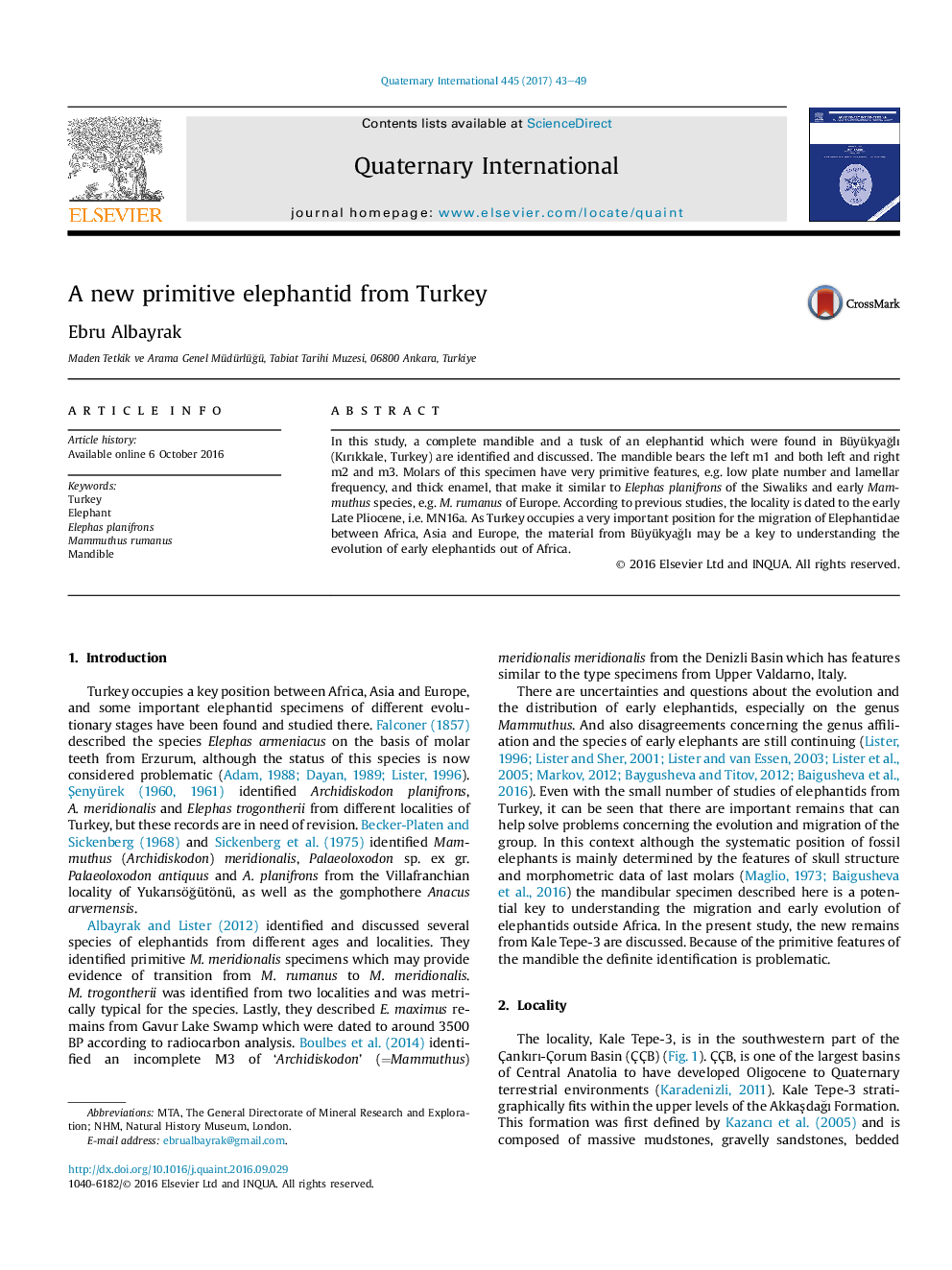| Article ID | Journal | Published Year | Pages | File Type |
|---|---|---|---|---|
| 5113222 | Quaternary International | 2017 | 7 Pages |
Abstract
In this study, a complete mandible and a tusk of an elephantid which were found in BüyükyaÄlı (Kırıkkale, Turkey) are identified and discussed. The mandible bears the left m1 and both left and right m2 and m3. Molars of this specimen have very primitive features, e.g. low plate number and lamellar frequency, and thick enamel, that make it similar to Elephas planifrons of the Siwaliks and early Mammuthus species, e.g. M. rumanus of Europe. According to previous studies, the locality is dated to the early Late Pliocene, i.e. MN16a. As Turkey occupies a very important position for the migration of Elephantidae between Africa, Asia and Europe, the material from BüyükyaÄlı may be a key to understanding the evolution of early elephantids out of Africa.
Related Topics
Physical Sciences and Engineering
Earth and Planetary Sciences
Geology
Authors
Ebru Albayrak,
